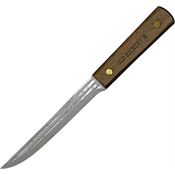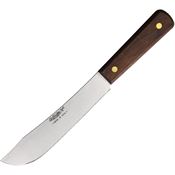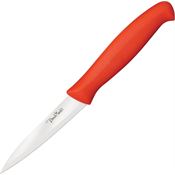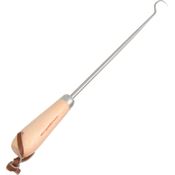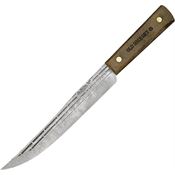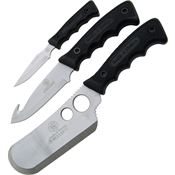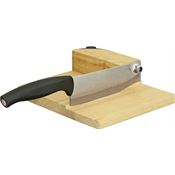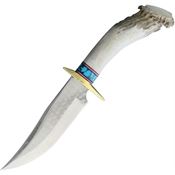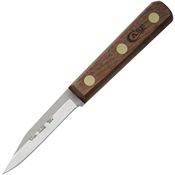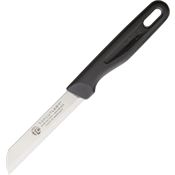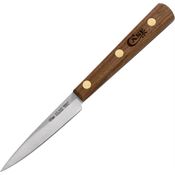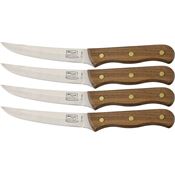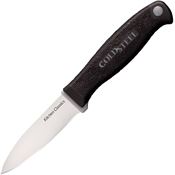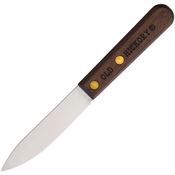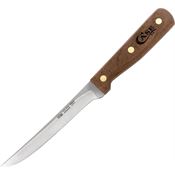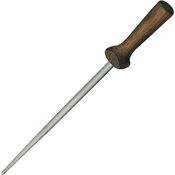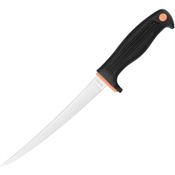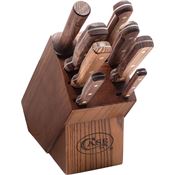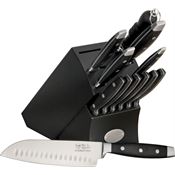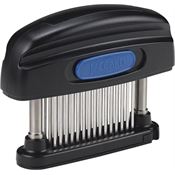Be awesome and support small business. Click for a message from Josh the owner
Kitchen Knives - Culinary Cutlery
View all Kitchen Knives - Culinary Cutlery

Kitchen Knives
A good quality set of kitchen knives is an essential part of any home. Keeping a well-maintained and sharp set of kitchen knives marks the difference between easy and effective cooking or a laborious and unenjoyable breakfast, lunch and dinner.
Whether one lives on their own or they cook daily for their partner or family, having the right knives for a range of culinary needs is something which every person should endeavor to possess.
Knowing just what makes for a fully-equipped kitchen is not a difficult process. The following article will list the essentials and the best places to purchase the finest kitchen knives available online. Knife Country USA has an incredible range of kitchen cutlery in their online store, where visitors are assured of a modern selection of superior quality culinary tools.
Exploring the Main Categories of Kitchen Knives
The difference between a well-constructed kitchen knife and a low-quality one can easily be seen over time as the durability comes to the fore. Kitchen knives come in different shapes and sizes, designed and manufactured for specific areas of cooking. It is a great pity that so many people will simply pick up the nearest kitchen knife available and often use the wrong tool for the task at hand.
Not only does using the inappropriate knife make preparing food more difficult, the actual blade can quickly become blunt and even become damaged if the correct kitchen knife is not used for the purpose for which it was designed.
When one is expanding their kitchen knife collection, it is important that they understand just what each individual knife is best suited for and what jobs it should not be used for. Knife Country USA emphasizes the correctly informed approach to each type of kitchen knife in general.
Santoku Knives
Also known as the Santoku bocho, or Bunka bocho, the Santoku range of kitchen knives is a Japanese standard in any proud kitchen. It is best described as a general-purpose kitchen knife, generally measuring between 5 to 7 inches in length.
Its sheepsfoot blade runs along a flat edge, which is characteristically designed with a 60-degree angle culminating at the point. The primary uses of this knife can be found in the meaning of the Japanese word ‘Santoku’, which is “three uses” or “three virtues”.
These three uses are mincing, slicing, and dicing. The knife’s original design was implemented with a strong focus on balance and harmony, allowing for a highly practical and smooth usage. Santoku kitchen knives are some of the most commonly-used kitchen knives, and are perfect for dicing vegetables, filleting fish, and mincing beef.
Knife Country USA has an excellent range of Japanese kitchen knives in general. This is a country which is prized for its meticulously crafted blades, which the best chefs in the world hold in high regard, and insist on keeping in their drawers or blocks.
Breaking Knives
As the name suggests, this variety of Kitchen Cutlery is used for breaking down larger cuts of meat into particularly-sized roasts or steaks. You will see any good butcher using such knives when preparing the requested sized cut for a customer.
That does not mean, however, that the ordinary cook should not keep a few breaking knives in their drawers, especially if one enjoys working with large pieces of meat. Breaking knives are very effective at slicing through the more resistant skins on meat, breaking through cartilage with precision, and working through smaller bones.
One can also easily control how much fat remains on a cut with breaking knives, and finding the perfect balance between meat and fat is easily achieved with a high-quality breaking knife. It is difficult to find a sharper knife than the breaking variety.
Cleaver Knives
These larger knives generally come with a rectangular-shaped blade, with a hatchet-like design. Cleaver knives are what we most commonly associate with the name ‘butcher knife’, and are used for hacking through the tougher parts of a cut of meat.
A cleaver knife’s strong edge is honed for durability, ensuring that the repeated chopping of large bones, tougher types of meat, and cartilage does not wear down the knife. Cleaver knives are far blunter than smaller kitchen knives, and are not generally used for slicing or sawing.
Rather, cleaver knives rely on a strong swing and its momentum to cleave through whichever section of meat one happens to be dividing. Alternately, the large, flat edge of a cleaver is perfect for crushing peppercorns, garlic, or nuts.
Cleaver knives require a strong and hefty chopping block or board, and can easily break or damage the more brittle or prized cutting boards.
Cooking Knives
Chef’s knives, or cooking knives, are the most important blades within a chef’s collection. These knives are most commonly found in lengths ranging between 5-to-10 inches. Some chefs prefer shorter varieties, while others swear by longer blades ranging closer to 10 inches.
It all really depends on what a person finds the most comfortable and effective to use. Still, it is never a bad idea to explore different lengths, handle types, and shapes. While longer blades may seem a bit uncomfortable to use at first, the efficient versatility which comes with a longer knife will soon make this a cook’s preferred length.
Knife design should also be as safe as possible, and longer knives allow for a more controlled and protected slicing motion.
Other than heavy duty butchering,cooking knives can be used for almost all preparation and cooking processes. From dicing strawberries and bananas for smoothies, to chopping up chicken, beef, and fish.
Carving should also not be done with a chef’s knife, and thicker-skinned, large vegetables such as butternut can also quickly blunt a cooking knife.
Block Sets
Once one starts building their prized collection of kitchen knives, a convenient and safe way to store them is needed for ensuring that a kitchen is well-ordered. The best way to achieve this is through arranging Block Sets.
Besides the utilitarian usage, block sets allow for a visually pleasing setup. Block sets come in many different designs and colors. Whether the budding chef wants a chestnut set to compliment wooden furnishings, or a vibrantly colored acrylic set to go with the bright and warm colors in a kitchen, home owners should take some time to decide just what will look best in their homes.
Cooking is obviously very time-sensitive, and not having to spend a few minutes rummaging through drawers can mark the difference between pleased guests, and having to order takeaway.
When purchasing a block set, a chef will receive most of the essential culinary knives required to complete their cutting, dicing, and carving needs. That being said, one should not stop at pre-packaged seta, as there are plenty of uses for knives which do not come with a block set.
Knife Country USA has an awesome and eclectic variety of block sets, catering to the funkier chef who loves to keep their zany kitchen theme flowing through everything, to the more traditionally minded aesthete who prefers a subtler beauty.
Boning Knives
These specially designed knives will take care of most bone-removal needs when dealing with meat cuts. Such a process requires a certain level of delicacy and attention, and safely removing bones from a cut of meat is best achieved with boning knives.
As one can imagine, different animals, and the diversity of their cuts, require a slightly different (and often completely different) approach and knife. With this in mind, chefs who work with a lot of different types of meat should consider keeping a choice of boning kitchen knives in stock.
There is an almost surgical level of precision which one can achieve by using boning knives in a skilled and focused way. The larger and more durable boning knives are better used for tougher meats such as pork, beef, and lamb, while chicken and fish can be better deboned using the smaller and more pliable boning knives.
Bread Knives
Who doesn’t love a large, fresh, and warm loaf of their favorite type of bread? In order to carve up a perfectly sized bunch of bread slices, a bread knife is essential. These knives are much longer than most kitchen knives, and are serrated with grooves which are needed for the clean slicing of bread.
The delicate crusts of bread loaves can easily be messily broken if sliced with non-serrated knives, ruining a lovingly baked loaf of bread. Although serrated bread knives are very difficult to sharpen – often not being able to be sharpened at all – there generally is no need to sharpen serrations, and they will maintain their edge for many years to come.
While bread knives are obviously perfect for bread, they should not be used for other cutting implementations, as this can easily damage their thin constitution, and heavily reduce sharpness and overall durability.
Ceramic Knives
These are some of the strongest and most durable knives a chef can hope to own. The blades of these knives are made from ceramic, often created using zirconia, which is dry-pressed and fired in a powdered form to achieve solid-state sintering.
Ceramic knives are almost doubly as hard as steel blades, and will remain sharp for an extended period of time, often far beyond that of steel blades. It takes a diamond-dust covered grinding wheel to sharpen these knives, which gives one a good idea of what kind of precision ceramic knives provide.
Ceramic knives are also perfect for harsh environments, and their durability is phenomenal. Ceramic knives also have a great resistance to caustic substances and strong acids, allowing them to slice through countless cuts of meat, fruits, and vegetables without worry for corrosion.
Unless a ceramic knife has been produced with a superior level of manufacturing, the dropping of one of these blades on a hard surface can break them almost immediately. Good care must be taken not to chip these blades by attempting to chop through bone or frosted foods.
Knife Country USA insists on stocking ceramic kitchen knives which are designed to be shatterproof. These costly knives are a big investment, and should not have to be scrapped after a single drop, something which is sometimes unavoidable when things start getting hectic in the kitchen.
Deba/Yanagiba Kitchen Knives
For those who love nothing more than preparing and making their own sushi from the freshest raw seafood, as well as for general seafood enthusiasts, Deba or Yaganiba knives are the perfect Japanese tool.
Creating high quality sushi is all about uniformity – making sure that each piece of sashimi, maki, or rainbow roll looks the same. Yanagiba kitchen knives allow for the glossy and symmetrical slicing of seafood.
Seafood is one of the stickier food types, and many slices of the soft flesh are often ruined in appearance when pried off less stick-resistant knives. Yaganiba blades are primed in a way which prohibits adhesion of seafood to blade surfaces.
Remember to ensure that you use a pull and cut method of cutting when using a Yaganiba knife, as opposed to the western cutting direction of push and cut.
Fillet Knives
When it comes to boning, fillet knives are some of the most popular models for the filleting of fish. You can expect most fileting knives to measure in between 5 and 11 inches, a length which provides the cook with an excellent level of control for that precise fileting process.
Make sure to look for a highly flexible fillet knife, which is necessary for the accessible movement of the blade through the backbone and beneath the skin of fish. This knife is best purchased by those who insist on preparing a whole freshly caught fish, rather than purchasing frozen and packaged fillets.
Perfecting the usage of fillet knives takes a bit of practice, and preparing a whole fish in a restaurant-quality way requires both a well-suited fillet knife and a skilled cook. Although filleting may initially appear to be quite a cumbersome process, you will quickly find yourself breezing through this highly enjoyable preparation, especially when you are serving up gorgeous plates of fish and chips, or a fish casserole.
Sharpening Steel
Also known as sharpening rods, sharpening sticks, or honing steels, a sharpening steel is a rod made from steel or ceramic which is the most common kitchen tool for realigning blade edges.
While many people are under the impression that these tools are used for sharpening blades, they are actually not even used for honing. The use of this tool comes in the realignment of curled edges without needing to shed the metal of a knife along its edges.
Sharpening steels are most often used by cooks and butchers who work with heavy-use cuts of meat, where the edges of blades will steadily become deformed over time due to the tough friction put on knives frequently hitting bone.
A lower quality sharpening steel will easily hurt your knives, which is why one should always make purchasing a trusted standard, such as the Hewlett Diamond Sharpener, or the Gatco Scepter, both of which can be found at Knife Country USA’s online store.
Paring Knives
These tiny utility knives are for peeling through the skins of vegetables and nuts, and can also be used for chopping them up. The beauty of a paring knife comes in its versatility, and cooks rely on these neat little knives for a range of uses.
Paring knives are perfectly suited for carving the softer peels of fruits such as kiwis, as well as those of more resistant vegetables like sweet potatoes. Many cooks prefer using paring knives over peelers, as one can easily achieve cleaner and quicker cuts.
Paring knives are also a very dainty tool when it comes to tip usage, something which Knife Country USA knows only too well, which is they stock paring knives which are designed with a myriad of applications in mind.
Their smaller sizes allow for more careful and detailed work which larger knives can easily ruin. Simply choke up the blade using the index finger and thumb on both sides of the blade. Hulling strawberries, deveining shrimp, and removing the flesh from peppers are just a few of the sensitive tasks which paring knives are perfectly suited for.
Sharpeners
No matter how well-constructed a blade is, blunting is a process which effects all knives, and good knife maintenance starts with having all of the necessary tools, sharpeners being needed for ensuring that you never struggle with slicing, chopping, and cutting.
Sharpeners come in many different sizes and shapes, and people all over the world have their own ways of sharpening their knives, from Japanese whetstones, to a simple piece of sandpaper.
While the knife sharpening process in itself is similar across the variety of different knives, certain knives should not even be sharpened in the first place, such as surgical knives. Despite what some people may say, knives should never be sharpened too often, particularly chef knives, as this can actually damage the blade, often beyond repair.
Steak Knives
Steak knives immediately make a person think of luscious and pristine grills, and cutting through melt-in-your-mouth fillets with minimal resistance. These serrated table knives are generally fitted with hefty wooden handles, and will usually be the single sharp knife found at a dinner setting.
Steak knives really took off following World War I, and before that the majority of table knives were sharpened. While one might not be able to imagine the upkeep which a full usage of sharp knives would require in today’s day and age, there were many more domestic workers employed by families pre-World War II whose daily tasks involved maintaining and polishing these sharpened table knives.
Those that love to grill, especially with company, should really consider purchasing a fine set of Knife Country USA steak knives, such as the Deejo steak knives with olive wood handles.
Some General Kitchen Knife Maintenance Tips
One of the most basic and obvious ways to ensure that your kitchen knives retain their health is through cleaning. While this may sound like a given, there are actually different cleaning methods which the variety of blades and metals which are fitted onto kitchen knives require.
For example, carbon steel knives need to be cleaned differently than stainless steel knives. The incorrect cleaning of a knife can easily result in premature oxidation, or rusting.
Despite the fact that stainless steel and ceramic knives have a higher lifespan than a lot of other knives, one still needs to put love and care into cleaning them. Ceramic, as mentioned earlier, is a fantastically corrosion-resistant material.
This makes cleaning ceramic knives a very simple and straightforward process, all that needs to be done is to move them through running water after usage, after which they can be left to dry in the air.
Stainless steel kitchen knives are also easy to maintain, and their chrome-rich substances allows them to resist oxidization very effectively. Dish soap and hot water are the best way to clean this type of knife, just avoid the harsher types of soap or detergents. Following rinsing, go for a cotton rag and gently wipe the knife clean.
Keeping Kitchen Knives Shiny
Kitchen knives can lose their shine over time, and can appear tarnished. Do not fret when this happens, it just means that the product has been put to good use, and one can easily remedy their appearance to look fresh out of the shop.
Vinegar is a well-loved knife-cleaning substance by chefs the world over. What many chefs do not know, however, is that heating the vinegar before application will have even greater cleaning results!
Simply soak a cloth with heated, white vinegar, then rub firmly across the blade until the desired level of shine is achieved, before drying with a clean cloth.
Potatoes are also a popular means for cleaning kitchen knives, and the starch within a potato actually improves a steel blade’s rust resistance properties. Just chop a potato in half, rub it along the sides of the blade, and then wash with water and dry.
Browse Through the Huge Selection of Knives at Knife Country USA
Knife Country USA is one of the most reliable dealers in the knife and outdoor tool industry. Having a flourished inventory, which includes more than 30,000 models of pocket knives, fixed blade knives, hunting knives, butterfly knives, machetes, flashlights and knife sharpeners; Knife Country USA gives you a huge variety of options to choose from. The online store has a huge selection of premium outdoor accessories and survival gear, manufactured and supplied by some of the elite brands across the globe. You can find an array of tactical gear from over 700 name brands including Buck Knives, Case Knives, Cold Steel Knives, CRKT Knives, Gerber Knives, Kershaw Knives, SOG Knives, TOPS Knives, Victorinox Swiss Army and many more. A superb megastore with an expanding product line, you can always trust Knife Country for quality and variety! Call us today if you need further assistance as we are here Monday through Friday for help.
Top Selling Kitchen Knives - Culinary Cutlery
Old Hickory 5060 Hop Knife with Hickory Handle
$21.25$13.39Ships FastShips within 1 business day!Hop Knife with Hickory HandlesBenchmark 210 Ceramic Tomato Knife with Red Polymer Handle
$9.98$6.91Ships FastShips within 1 business day!7.5" overall fixed bladePig Tail Food Flippers 2 - Small Food Flipper with Wood Handle
$19.75$12.44Ships FastShips within 1 business day!12.25" overallSmith & Wesson CAMP Campfire Fixed Blade Knife with Black Checkered Rubber Handle - Set of 3
$77.28$48.69Ships FastShips within 1 business day!Bullseye Campfire Set.Kitchen DAO Knives 0057 Basic Kitchen cutter with Black Rubber Handle
$34.98$19.95Ships FastShips within 1 business day!11.5" overallKen Richardson 1408T Ken Richardson Knives Bowie and Turquoise Inlay with Elk Antler Handle
$234.98$135.54Free ShippingThis item qualifies for free shipping Ships FastShips within 1 business day!10" overallCase 07320 3 Inch Clip Point Blade Paring Knife with Solid Walnut Handle
$39.43$25.99Ships FastShips within 1 business day!3" clip point Blade paring knifeTop Cutlery 17343B Solingen Paring Micro Serrated with Black Handle
$5.97$4.38Ships FastShips within 1 business day!7.38" OverallCase 07319 3 Inch Spear Point Blade Paring Knife with Solid Walnut Handle
$41.50$26.99Ships FastShips within 1 business day!3" spear point Blade paring knifeChicago B144 4 Piece Steak Knife Set with Solid Contoured Walnut Handle
$58.88$37.10Ships FastShips within 1 business day!4 PC Steak Knife Set.Cold Steel 59KSPZ Paring Knife Kitchen Classics with Stainless Construction Blade
$15.60$10.82Ships FastShips within 1 business day!6.75" OverallCase 07315 6 Inch Boning Knife with Solid Walnut Handle
$61.53$39.99Ships FastShips within 1 business day!6" Blade boning knifeChicago CL38 10 Inch Sharpening Steel with Solid Walnut Handle
$30.48$19.20Ships FastShips within 1 business day!10" Sharpening Rod.Kershaw 1257 Clearwater II Fillet Fixed Blade Knife
$19.98$12.59Ships FastShips within 1 business day!12.25" overallCase 10249 9 Piece Block Set with Walnut Brown Handle
$535.80$349.99Ships FastShips within 1 business day!Block SetHen & Rooster I028 13 Piece Kitchen Knife Set With Black Composition Handle
$132.48$83.46Ships FastShips within 1 business day!13 Piece Kitchen Knife Set with Black Composition HandlesJaccard 200345NS Meat Maximizer 45 Blade Kitchen Knife with Black ABS Construction
$53.13$33.47Ships FastShips within 1 business day!Meat Maximizer 45 Blade Hand Held Meat Tenderizer



















